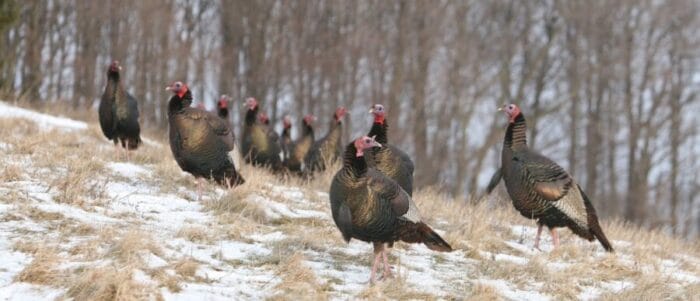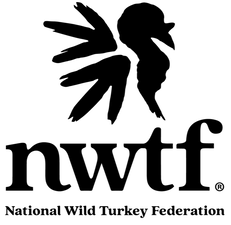Birds of a Feather: EQIP Funding Announced to Improve Upland Bird Habitat in Ohio
The U.S. Department of Agriculture’s Natural Resources Conservation Service has announced a statewide effort to create and improve upland bird habitat in Ohio. Private landowners and producers can apply for funding through the NRCS Environmental Quality Incentives Program. Applications for EQIP are taken continuously; however, interested landowners are encouraged to contact their local NRCS office before the anticipated Feb. 16, 2024, sign-up deadline for fiscal year 2024 funding.
“A renewed focus on creating and improving nesting and brood-rearing habitat will provide a much-needed boost for Ohio’s upland game bird populations,” said Kendra Wecker, Ohio Department of Natural Resources Division of Wildlife chief.
With upland bird populations declining, diverse quality habitats are critical, making private landowner actions key in creating and maintaining complex habitat requirements to help the birds thrive. Habitat types, including woody edges, native grass field borders, and shrubby cover, provide nesting, brood-rearing, and loafing areas to bolster upland bird populations. Habitat value depends on the quality, quantity, and interspersion of food, water, cover, and living space. With the EQIP, landowners can place multiple conservation practices on the landscape to address these needs.
The NWTF supports the effort and will lend a hand in implementing the program.
“The NWTF works hand in hand with our state, federal, and nongovernmental organization partners, as well as private landowners, to conserve wild turkeys and their habitats and preserve our hunting heritage,” NWTF District Biologist Ryan Boyer said. “Thanks to these robust partnerships, we can collectively promote healthy and sustainable wild turkey and upland bird populations through active management and provide private landowners with the resources they need to confidently and successfully manage their lands with support through EQIP.”
“Private landowner involvement plays such an important role in preserving these species loved by hunters and other recreationalists,” said John Wilson, Ohio NRCS state conservationist. “With the Environmental Quality Incentives Program, we can help landowners place conservation practices on their land that will make a measurable difference in upland game-bird habitats.”
Pheasants Forever and Quail Forever also fully support the conservation program’s goals in creating and protecting upland game-bird habitats.
“Pheasants Forever and Quail Forever are committed to improving upland habitat in Ohio and are excited about this opportunity landowners have to use EQIP funding for their next project!” said Cody Grasser, Pheasants and Quail Forever state coordinator. “Ohio’s upland bird populations depend on private lands, and programs like EQIP are a great way to deliver quality habitat where it is needed. In partnership with NRCS, ODNR Division of Wildlife, and other organizations, we look forward to helping implement this program and assisting private landowners to improve the future of upland birds in Ohio.”
The Ruffed Grouse Society and the American Woodcock Society are also proud collaborators.
“Established in 1961, the Ruffed Grouse Society is dedicated to creating healthy forests, abundant wildlife and promoting a conservation ethic,” said Jon Steigerwaldt, Ruffed Grouse and American Woodcock Society forest conservation director. “Together with the American Woodcock Society (established in 2014), RGS and AWS work with private landowners, forest products industry partners, and government agencies to establish critical wildlife habitat utilizing scientific management practices. That is why RGS and AWS support the ‘Birds of a Feather’ EQIP funding announced to improve habitat in Ohio. We feel this is a positive step toward improving upland bird habitat where ruffed grouse were at one time more abundant.”
NRCS conservation practices, including wildlife habitat plantings, early successional habitat development, and invasive species removal, are among the essential practices available to promote important wildlife habitats. Landowners who implement these practices help promote upland bird habitat and enhance their property value to other species such as songbirds, white-tailed deer, cottontail rabbits and pollinators.
Landowners interested in EQIP funding to improve upland bird habitat should reach out to their local Ohio USDA service center or visit the Ohio NRCS EQIP webpage for more details. For more information on technical assistance, contact the Ohio Department of Natural Resources Division of Wildlife management consultant or Pheasants Forever Farm Bill biologist to learn more.
Since its inception in 1973, the NWTF has provided the foundation for wild turkey conservation throughout North America. From the first research project funded in the 1970s, to the multimillion-acre restoration initiatives going on today and everywhere in between, conserving the wild turkey and preserving our hunting heritage has always been — and always will be — the backbone of the National Wild Turkey Federation.


